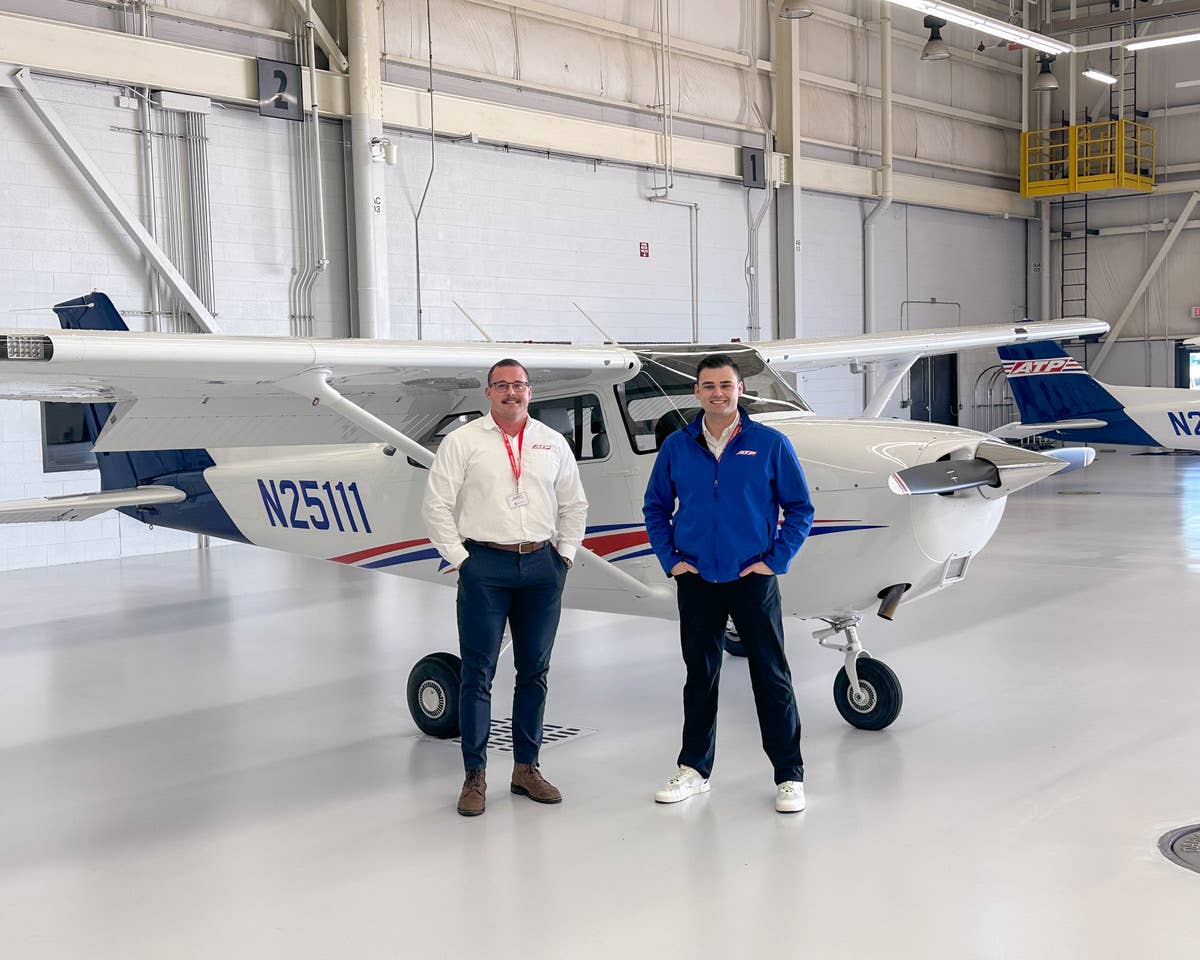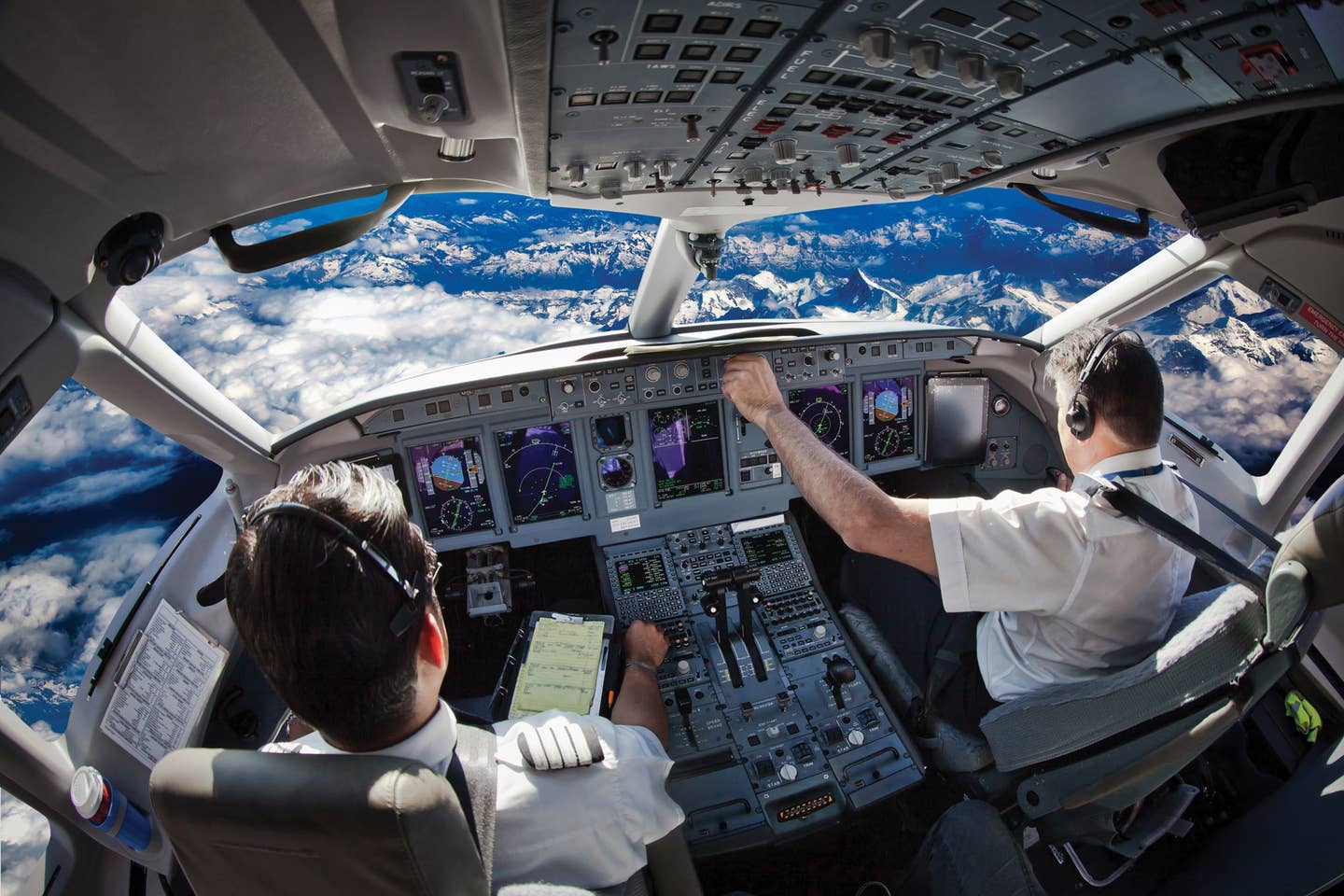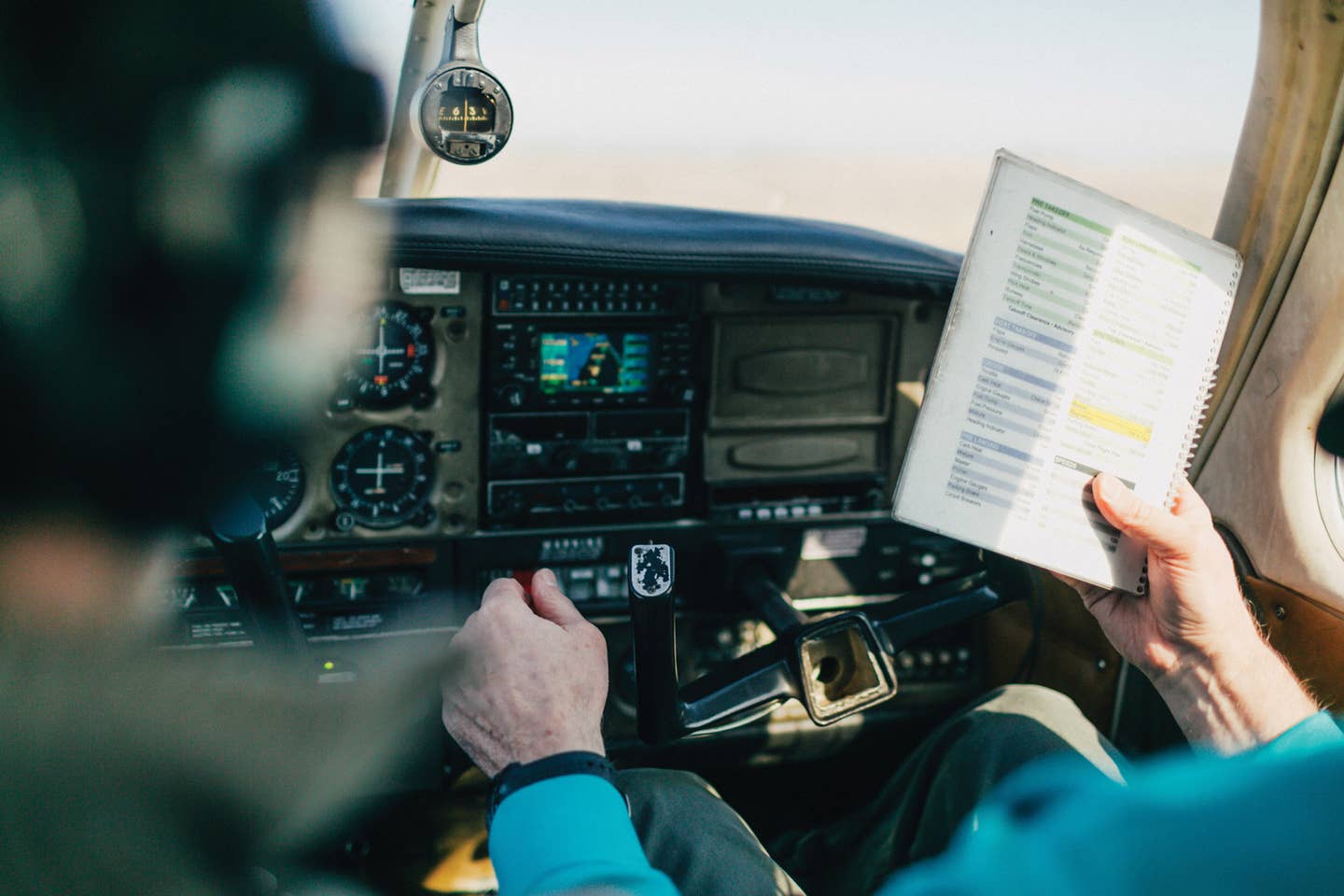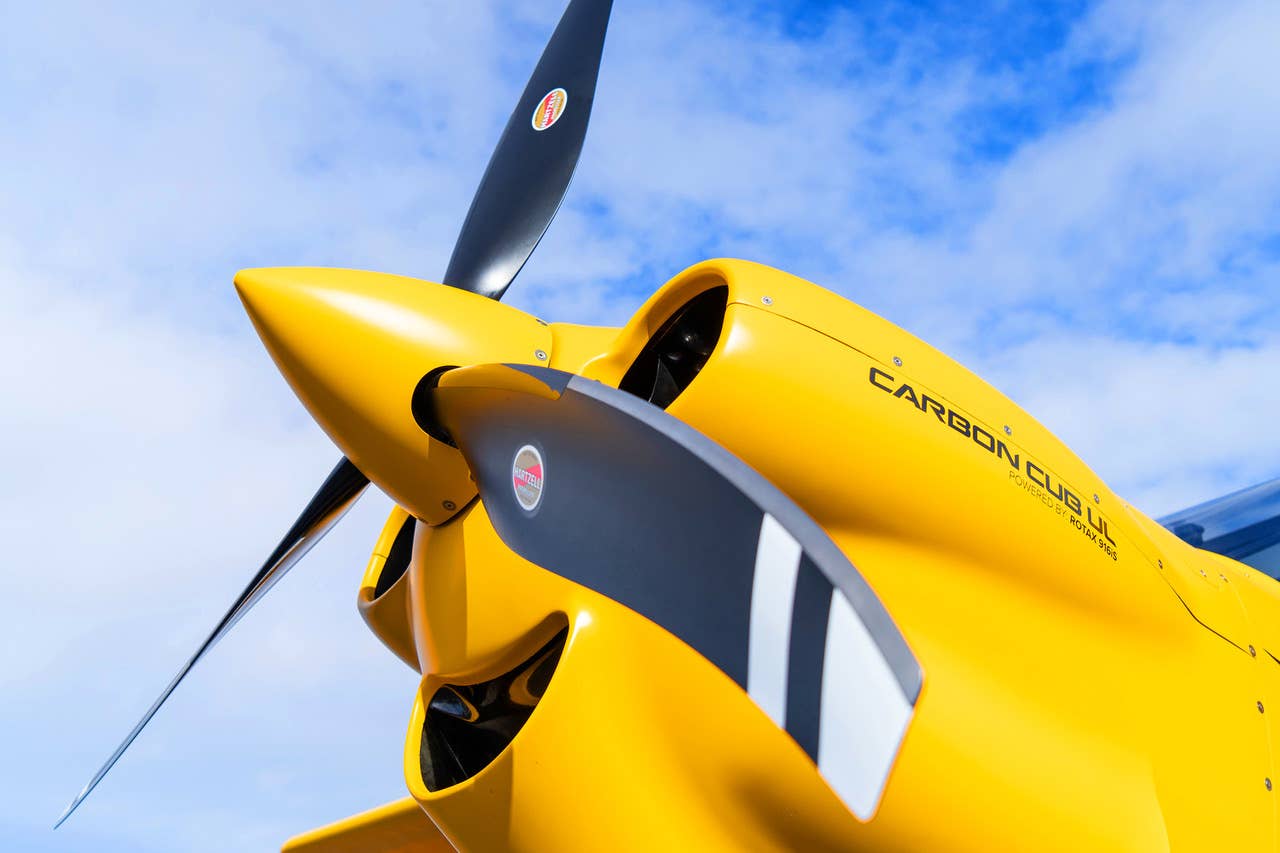Unexpected circumstances will always be part of flying. From minor inconveniences to full blown emergencies, there is absolutely no way to plan everything well enough to keep out of trouble forever. That said, back when I began flying I had no idea how many complications could be avoided with a more comprehensive approach to flight planning. I could get from one place to another in the air. What more could a fledgling pilot need?
Plenty, as it turned out. I started training as a dispatcher roughly seven years after getting my pilot's license. The systematic and extraordinarily organized approach to all aspects of flight was something of a revelation. Sitting in the dispatcher's seat, it became my job to plan everything from getting the right aircraft to the right locations to making sure there was a place for my crews to sleep at night.
Safety of flight responsibilities are split between dispatcher and PIC, both professionally and legally, so at the heart of it, flight planning remained the same: a plane and the people on it needed to make a safe, efficient journey. The things they needed to get there were also the same: safe, open airports, flight-ready pilots and airplanes, access to fuel and maintenance, flyable weather, and solid options in case of an emergency. For all the sameness, dispatching taught me to ask new questions.
Some of them didn't matter as much to GA flying. Most people who travel at all regularly can manage hotel reservations without needing dispatcher credentials. Some of it mattered a lot---being a dispatcher made me take a step back and reconsider just how much I could do from the ground in order to set up the safest, most successful flight possible in ever-shifting circumstances. It broadened my perspective.
Big Picture Thinking
I completed my dispatch training and exam ’in' an Airbus A320---as with learning to fly, training as a dispatcher involves learning general principles while applying them to a specific aircraft. I was expected to know (and was tested on) the systems, limitations, and standard procedures for the A320 going into my oral/practical exam. The reason for this level of specificity is simple: a dispatcher's job is to act as half of the flight safety and decision-making team. They need to have as much understanding of the specifics of the plane they are sending up into the air as the PIC does.
There is a lot of information a pilot has to gather and filter before any flight, even if the plan is just to do a few touch-and-goes. In most GA flying, that job that falls solely on the shoulders of the PIC. The good news is that things like gathering weather data are a lot easier these days---there are plenty of easy to understand weather products a few clicks away.
Learning to dispatch big airplanes flying across multiple time zones pushed me to look at a larger picture. A commercial jet flying domestically is likely to encounter at least a quarter of the weather in the U.S. during any given flight. Knowing where that weather is coming from and what the bigger system pushing it all looks like is critical to planning an airline flight. However, the same can be said for a long cross-country in a GA airplane. A 500-nm trip might see very different weather conditions on either end of it.
Paying attention to the plane you're flying is critical, too---airliners come with extensively documented histories, from logbooks to squawk sheets. For a dispatcher, that information is readily available via computer, so you can see what problems and repairs it's gone through recently. GA flying is different, whether you're renting or flying your own aircraft.
Know Your Plane
Flying your own plane has the benefit of familiarity and that's a good thing, for the most part. Chances are you know exactly when it last had maintenance work done and on what component, when its inspections are due, and how it usually performs in a variety of circumstances. The plane is a known quantity.
This can also be a bad thing. A pervasive, slowly developing issue can slide by, whereas a pilot unfamiliar with the plane might notice immediately that something isn't quite right. Unlike with dispatch, there is generally only one set of eyes tracking potential problems. I once had the radio in a familiar plane die on me over the course of weeks. It just got quieter and quieter, very gradually. I thought I was imagining things until a friend got in the plane with me and asked what was wrong with it.
The same is somewhat true for renters as well. Pilots tend to rent from the same companies and usually have a preferred plane or two that they try to get hold of if possible. Even so, in some respects, what you're flying is luck-of-the-draw.
You can (and should) check maintenance records, ask good questions, and do a thorough pre-flight, but you still have no way of knowing about that hard landing the person flying before you didn't bother to report. It's best to make sure you know the reputations of the companies you work with and are comfortable with how they keep their fleets. Before renting from that new FBO down the ramp, schedule a tour or drop by for a visit to see how things are run.
As a dispatcher, the types of planes and the crews rated to fly them are all important pieces of the puzzle. Rent for long enough and you will one day arrive to find that the 172 you asked for was unexpectedly down for maintenance and the only other option is another type of aircraft.
Let's say it's a 152. Assume you've had plenty of time in both. They handle similarly enough that a few months of only flying the 172 won't leave you too rusty on the 152. You may have to plan an extra fuel stop and a longer flight time, but that's nothing to skip a flight over. However, let's say they're offering you an Archer, and well, maybe you've been in one twice. It's probably not the greatest idea to head off on a long cross-country and hope that you'll remember where all of the switches are if something goes wrong.
The nice thing about GA flying is that if you're not sure, you can get a checkout. Many aircraft rental outlets these days require extensive, some might say "excessive," checkout periods. One pilot we spoke with had to go through a 10-hour checkout to rent a Piper Saratoga, despite a lot of time in type. The upside, he said, was that he got to know the airplane really well, got his instrument competency check done, and made a new friend in the flight instructor who checked him out.
It's not a bad idea to treat less familiar rentals like a mini-type rating. I couldn't (and wouldn't even if I legally could) dispatch a 747 with a pilot who had only been flying the A320. Yes, it sucks to have to postpone a flight or to end up practicing turns-around-a-point instead of checking out that awesome new airport restaurant that just opened up a mere 70nm away, but not as much as the potential consequences of having to scramble for procedures and buttons when the flight doesn't go quite as planned.
ProActive Emergency Planning
Unplanned and emergency situations are the places where dispatch training really makes a difference. A colleague of mine and I used to play a game: we would each make a plan for the same flight, then take a moment to imagine the absolute worst-case scenario we could think of. Once that was done, we took turns throwing down our doomsday options and seeing if the other person could plan their way out of it. The caveat was that the scenarios had to be believable given the existing conditions.
After playing this game for a while, I got pretty good at grabbing alternates, juggling altitudes, and eyeing potential hot spots as I was in the process of developing a route. We both learned to spot the places on a flight where, if something went wrong, everything could start to fall apart. A GA plane is likely to be lower, slower, and less able to make it to an airport than an airliner. They are also much more capable of making a safe off-airport landing. The speed and altitude differences change what you're looking for while emergency planning, but not the benefits of looking for it like a dispatcher would.
Let's say your engine dies and you need to go with that off-airport option. Dispatch thinking would have you develop a good sense of the geography under you long before you get there. How does the terrain rise and fall? Where are the things you want to avoid---forests, rivers, and cities? Are there sparsely populated areas that still have good access to a major highway so that emergency equipment can reach you quickly once you're down?
That said, don't go crazy figuring out every possible emergency alternative. Spending three days planning for a two-hour flight is neither practical nor fun. It's all about making multi-directional plans. If your destination is to the west and your alternate to the north, what happens when a line of thunderstorms blooms northwest of your position? Options behind you, ahead of you, and to either side start looking pretty attractive, especially if you already know they're there.
You should also ask yourself if your alternate is reasonable in a worst-case-scenario, not just when the weather behaves as predicted. Trying to make an approach to a single-runway field with a 90-degree crosswind---predicted to be a gentle, easy 5 knots, before that fast-moving front kicked it up to 35 knots two hours ahead of schedule---sounds like rather more of a test than any pilot needs while they are already diverting from some other unplanned situation.
Most of the time, you never need a way out, but the best time to think about alternates is well before oh-gosh-I-need-one-like-NOW happens. If you can plan your route so there are more favorable alternates without adding too many miles, do it. Leaving at a different time might help, too. An earlier departure could get you to your destination well before evening fog sets in. Flying from a dispatch mindset is just another way of keeping your plans informed and flexible.
Dispatching Your Own Flight
The goal of dispatch is to plan a safe, efficient flight and to hold a regularly-updated mental contingency map in your head during that flight. Having the eyes (and brains) of both pilot and dispatcher on a flight is a definite safety advantage. That said, you don't have to be a certificated dispatcher to think like one.
There are very few perfect days to go flying, and not all airplanes or weather forecasts are perfect either. By thinking like your own dispatcher, you can give yourself the tools you need to turn less-than-perfect into safe-and-flyable. In the end, it can help us make decisions based on a systematic assessment of flight viability, rather than on how much we want to be up in the sky.
What is a dispatcher?
We general aviation pilots are used to, for all intents and purposes, dispatching our own flights. Even if we don't think about it in those terms, that's what we're doing. We get the weather, figure our fuel needs, do weight and balance calculations, arrange for tiedown and fuel, if needed, and take care of all the other tasks related to the flight. Sometimes this is an easy thing to do. Sometimes, as you've no doubt learned from experience, making all the arrangements can be a bear.
Airline pilots have it easy, comparatively speaking, anyway. In commercial operations, the pilots team up with FAA-certified dispatchers to get all the dirty work done. The primary purpose of a dispatcher is to ensure that flights are safe and efficient, which is no different than our aim as GA pilots.
So how does the dispatch process work exactly? A dispatcher's task, once they have been assigned a flight, is to analyze all available data, determine potential hazards, and to choose the best route of flight. They are responsible for computing appropriate fuel requirements, maximum allowable takeoff and landing weights, weather reports, airport conditions, NOTAMS, and anything else required for safe completion of the flight.
Dispatcher and captain share responsibility for both safety and operational control of their flights. Once both have agreed that a flight is ready to go, the dispatcher signs a release. The pilot can't take off without one---a dispatch release is a legal document authorizing a flight for departure. The dispatcher also has the authority to cancel or delay a flight for unsafe conditions.
Think it ends there? Nope. The dispatcher remains responsible for the flight while it is in the air, monitoring any developing situations from weather to route changes to emergencies. The dispatcher stays in communication with the pilots, recommending any necessary changes to the flight plan. In addition, the dispatcher acts as the point of communication between the pilots and the company during a flight. Except for that last part, it's exactly what we GA pilots do on a flight, checking our weather en route, planning for possible diversions and other contingency plans should the circumstances of a flight require it.
In the event of an emergency, the dispatcher's job is to get the pilots what they need as quickly and correctly as possible. They are also responsible for notifying the company, government, and any private agencies necessary of the situation.
Testing for the Dispatcher Certificate is equivalent to the Air Transport Pilot written and oral exams. Though there is a practical section, there's no flying part to the test. That's what the pilots are getting paid for.

Subscribe to Our Newsletter
Get the latest Plane & Pilot Magazine stories delivered directly to your inbox






